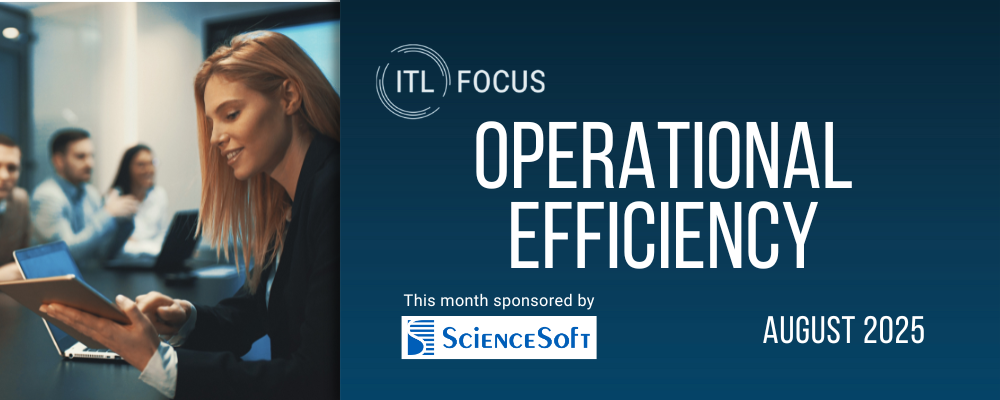 |
For this month’s ITL Focus, on operational efficiency, ITL Editor-in-Chief talked with an old friend and colleague, Jamie Yoder. Jaime is the president and general manager for Sapiens North America, which provides software tools that help insurers transform their businesses. |
ITL:
My mantra for a long time has been, “Let’s burn all the fax machines.” But I know you take a broader view when you think about how insurance companies can operate more efficiently.
Jamie Yoder:
I go back to the Digital Darwinism paper I published with ITL on the principles of a bionic organization. Too often, companies do little pilot projects to try to operate better rather than systematically understanding how to improve the speed and efficacy of decisions that happen across an organization.
The nice thing about ChatGPT is that it’s put in everybody's minds, “Oh, wow, we could use AI everywhere.” Not that we weren't attacking inefficiency across the board already, but now the ability to take a systematic approach has become obvious.
ITL:
The issue went from difficult to obvious, almost overnight.
Yoder:
I guess that's always the case. Then people get disillusioned, and we revert a bit, but then we find all the real opportunities.
If you step back a bit and look at the full potential of digital and all the advances it’s enabled, those innovations are in the capture, consumption, interpretation and use of data in new and exciting ways. And those new sources and new techniques allow for transformation in three key ways. You can change the way you engage, with customers and others. You can change the way the work is done. And you can change the way your organization changes.
In a bionic organization, the issue isn’t whether the machine or the people do the work. It’s about how they work together to improve the speed and efficacy of every decision and about how you keep improving over time.
When I look at generative AI, I like the notion of it as a copilot. With every task, it can almost be like having somebody there helping you. This is low-hanging fruit. The AI allows you to do the tasks you do every day, but much better and much more readily.
We have a product called Decision that allows you to visualize and manage complex business logic. Building those models can take a lot of manual effort. A simple use case for generative AI – one we’ve already done—is to describe for it what you want as your model and what the logic is, and to have it grab the eligibility rules for a mortgage or a claim or something else. You’ll have to test the model the AI gives you to make sure the logic is sound, but you can deploy it almost instantly.
You can produce an answer engine for agents dealing with customers.
You can use the AI to gather all kinds of different information and at least provide some guidance to augment what you're thinking, in any role from underwriting and marketing to legal, finance and management.
ITL:
I love the idea of AI as a copilot. I’ve described generative AI as providing rough drafts for us humans to finish. How do you make sure a generative AI doesn’t have the “hallucinations” that have sometimes embarrassed users very publicly?
Yoder:
You’re not using the AI to fully automate. You're just using it to sift through an awful lot of things to provide you the basis for a decision.
We used to look at underwriting in the commercial space and say, Wouldn’t it be great if every underwriter was actually a team that included a data scientist? Now, you can have an AI poring through all the information that’s available and winnowing it down. You aren’t just using the AI for efficiency. You’re uncovering information that you wouldn’t have gotten otherwise and making better decisions.
Think of the junior underwriter who gets binders full of information and has to sort through it all, and mostly is just trying to figure out what has been done with similar situations in the past. Now, the AI can do all that sifting and comparing and make sure that junior underwriter doesn’t miss something.
Marketing is another good example. The AI can create a nice outline based on your inputs, which is enough to trigger good ideas and to help ensure you don’t miss any angles. You’re not going to create something and post it automatically, but the AI can get you started, and we humans are good at sculpting once there’s something to work on.
Or think about contracts. Most contract clauses are repeated, so if you have a large language model that’s built off all the contracts you’ve ever done, you can have it do an awful lot of the work on new contracts you’re writing.
ITL:
A great thing is that it sounds like people can do things in the short term, not just in the long term, that can generate efficiencies while building long-term momentum.
Yoder:
In that Digital Darwinism piece, we say you shouldn’t just use AI to look at the stars. You should also use it to pick up the trash. I'll be quite excited to see how generative AI picks up the trash, because there can be a lot of quick wins.
Just train your AI on all the proposals you’ve ever done. 70% of the questions you’re asked are always the same, so the AI can provide the answer, leaving it to a human to provide unique spin as appropriate.
Have the AI look at your submissions and ask it, How have we responded to all the similar submissions we’ve received in the past?
ITL:
A quick digression: People talk a lot about large language models. It seems to me there's also potential for what I think of as small large language models: You train the model on all the data that’s out there on the internet but then bring it inside your company and only give it access to your data, your procedures, etc. Do you see the same thing?
Yoder:
Absolutely. You go wide initially and then give the model deep domain expertise.
ITL:
Glad I’m not hallucinating. What comes after the easy wins, after the picking up of the trash?
Yoder:
Companies need to operationalize the information from the AI within their process flow. Decision modeling is a huge part of what we do, so we look not just at how to ingest all that information but how to augment the intelligence in that human-machine pairing.
Then, of course, we’re going beyond how to do the work and looking at all the below-the-waterline stuff, about how you change the way you change. There’s a huge advantage in development, in testing, in documentation and so on if you can create an environment that lets you continually improve.
As we help insurance companies transform, I keep looking at those three levels: how you engage, how you do the work and how you improve. That last one is key. You can’t just do projects. You have to create an environment that lets you get better and better all the time. You need an operating model that is built to continuously evolve.
You don’t want machine learning. You want a learning machine.
ITL:
A great idea to end on. Thanks, Jamie.





